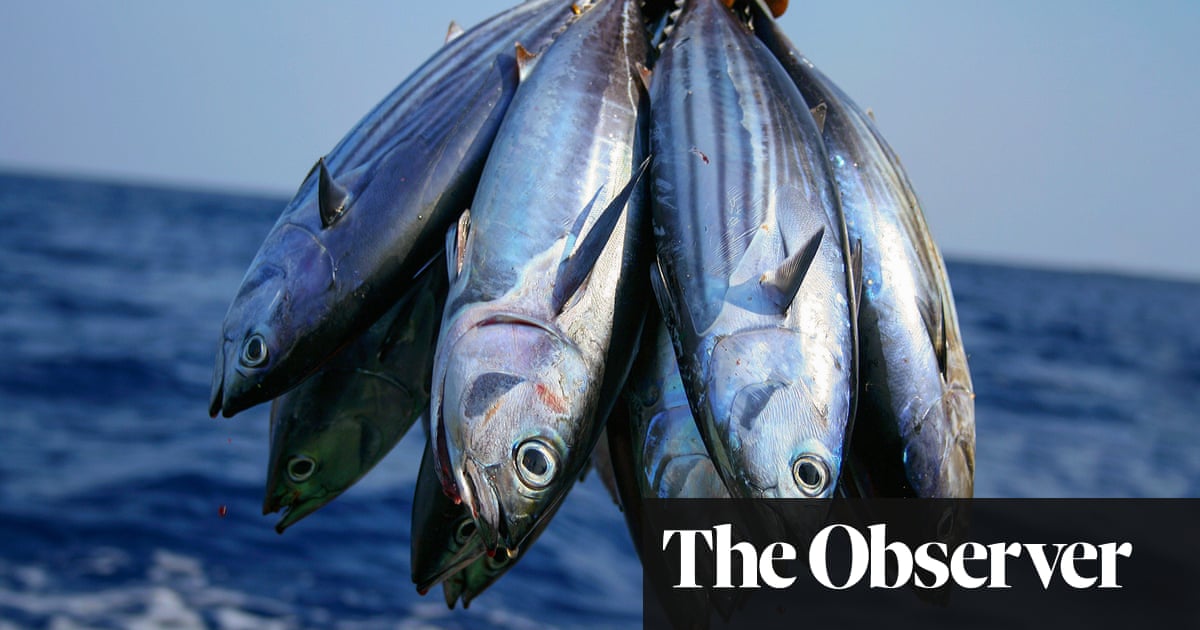
In a year of record-breaking temperatures and marine heatwaves threatening our already depleted seas, conservationists, supermarkets and even musicians, including Icelandic singer Björk, have spoken out over dwindling wild fish populations.
Oceana, a US-based NGO, reported that half of Britain’s largest wild fish populations, including North Sea cod, are either overfished or in a critical state; supermarkets criticised the UK, Norway and EU for failure to reach agreement over sustainable mackerel fishing; and Blue Marine Foundation, another charity, is taking the UK government to court for “illegally squandering” fish populations by ignoring scientific advice on stocks shared with the EU and Norway.
The welfare of farmed fish, as well as the impact of the fish farming industry, has also taken a hit. The naturalist and broadcaster Chris Packham called for a halt to the “catastrophic” expansion of the Scottish salmon farming industry, as the Guardian revealed farmed salmon mortality was at record levels. Most salmon bought in UK supermarkets are farmed.
And earlier this month, an expert assessment of wild fish populations found nearly a quarter at risk of extinction, with wild Atlantic salmon increasingly threatened.
So, what are the fish to ditch in 2024 and what should we eating?
“Unsustainable seafood is one of the biggest threats to our seas,” says Charlotte Coombes, good fish guide manager at the Marine Conservation Society (MCS). The guide’s latest edition, in October, awarded only one in eight UK fish the highest “green” status and considered only 13% a sustainable choice.
Consumers should ask “what, where and how”, says Coombes – what species, where it was caught and how. A simple start, she suggests, would be to swap the “big five” for other seafood.
Britons eat, on average, one serving of fish a week, 80% of which is made up of just five species. Cod and haddock, the staple of fish and chip dinners, is the most common choice, followed by salmon, tuna and prawns.
A simple “swap” would reduce the pressure on this handful of preferred favourites, Coombes says, reducing the demand that drives unsustainable fishing and farming practices.
Swap shop – what to buy instead of the big five
1. Cod
One of the UK’s favourites, cod is a cold water species, generally wild-caught. Populations have been struggling as sea temperatures rise. UK stocks are doing very badly and should be avoided, MCS says. The good news is, North Sea populations are starting to increase due to fishing restrictions, but the stock is not yet sustainable.
Sustainable swap Hake, certified by the Marine Stewardship Council’s (MSC) blue tick, is now a sustainable choice, thanks to good management and environmental conditions, says the MCS guide.
2. Haddock
Also a chip shop favourite, haddock is generally a sustainable, wild-caught fish. But some stocks are running low and haddock often swim in the same waters as cod, leading to haddock fisheries catching both species. Avoid fish less than 30cm in length and buying fresh during the March and April breeding season, MCS says.
Best choice Haddock from the North Sea, Scotland, Iceland or Norway, or MSC-certified.
Sustainable swap Plaice from the North Sea, where populations are thriving.
3. Salmon
Wild Atlantic salmon populations are 23% down globally and have vanished from many UK rivers. The species has been affected by widespread habitat loss, global heating and dams. Breeding with escaped farmed salmon also threatens many wild populations. Sea lice from salmon farms are also a problem. Wild Atlantic salmon is now classified as “near threatened”, and should be avoided, according to the fish guide.
Best choice Pacific wild salmon (pink, red or keta) from Alaska. Organic or salmon certified by a green tick from the Aquaculture Stewardship Council, MCS says.
Sustainable swap Farmed rainbow trout from UK ponds is a good alternative, MCS says.
4. Tuna
This top predator can grow up to three metres in length. There are many different species and MCS recommends checking its Good Fish Guide to see which are more sustainable. Avoid Pacific and Southern bluefin tuna, Indian Ocean yellowfin and tuna caught by gillnets or drift nets.
Best choice Skipjack or albacore tuna caught by pole and line or trolls, artificial lures on barb-free lines with minimal bycatch.
Sustainable swap Sardines from south-west England.
5. Prawns
Sourced from all over the world, prawns can be sustainable, depending on species, where and how they are caught.
Best choice Wild cold-water prawns from the north-east Arctic. Farmed prawns labelled organic or with an MSC or ASC label, according to the fish guide. Creel-caught Scottish langoustines.
Avoid Uncertified farmed king and tiger prawns from Vietnam, Indonesia or India.
Sustainable swap Mussels: UK, rope-grown mussels are among the most ocean-friendly seafood, the fish guide says.












